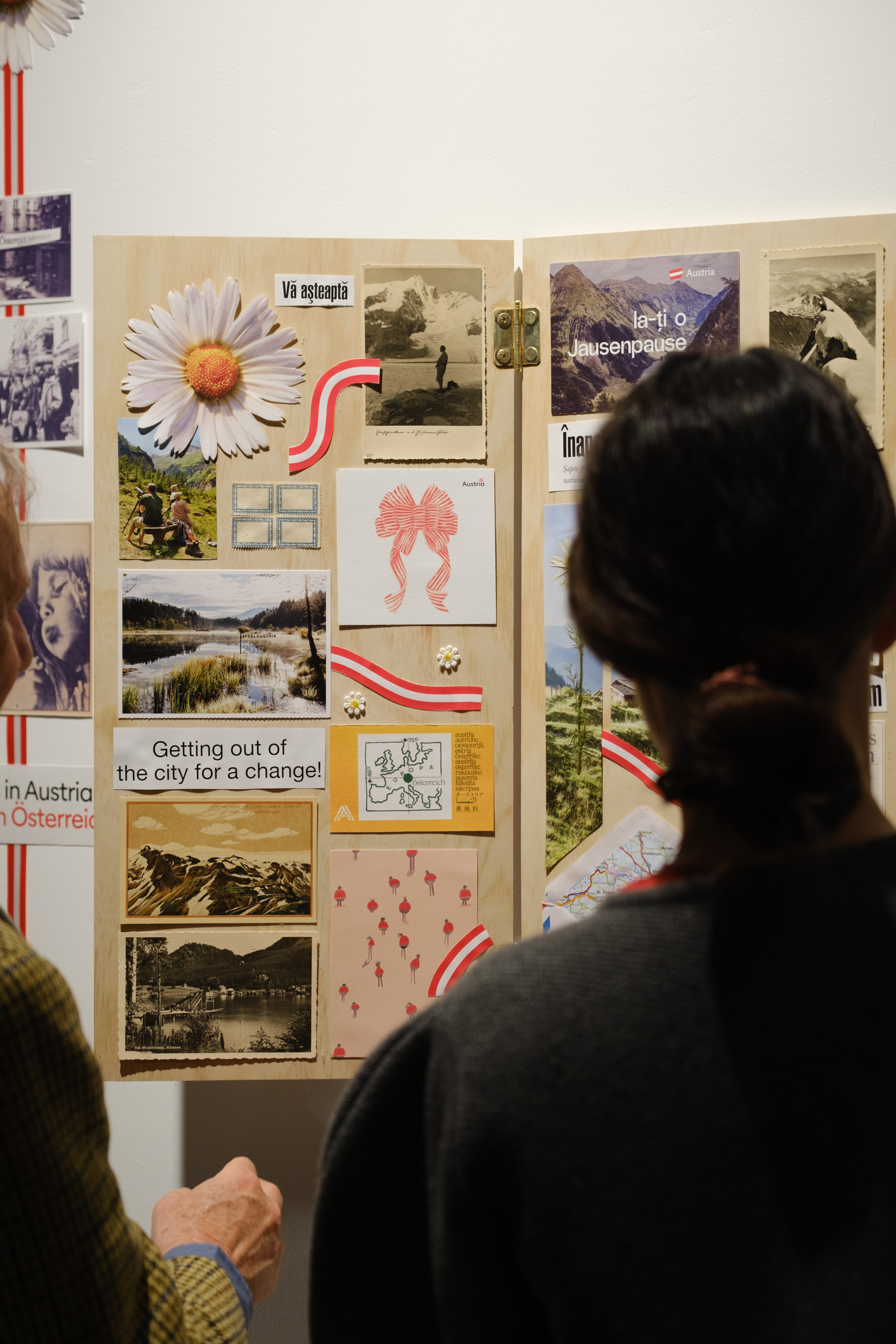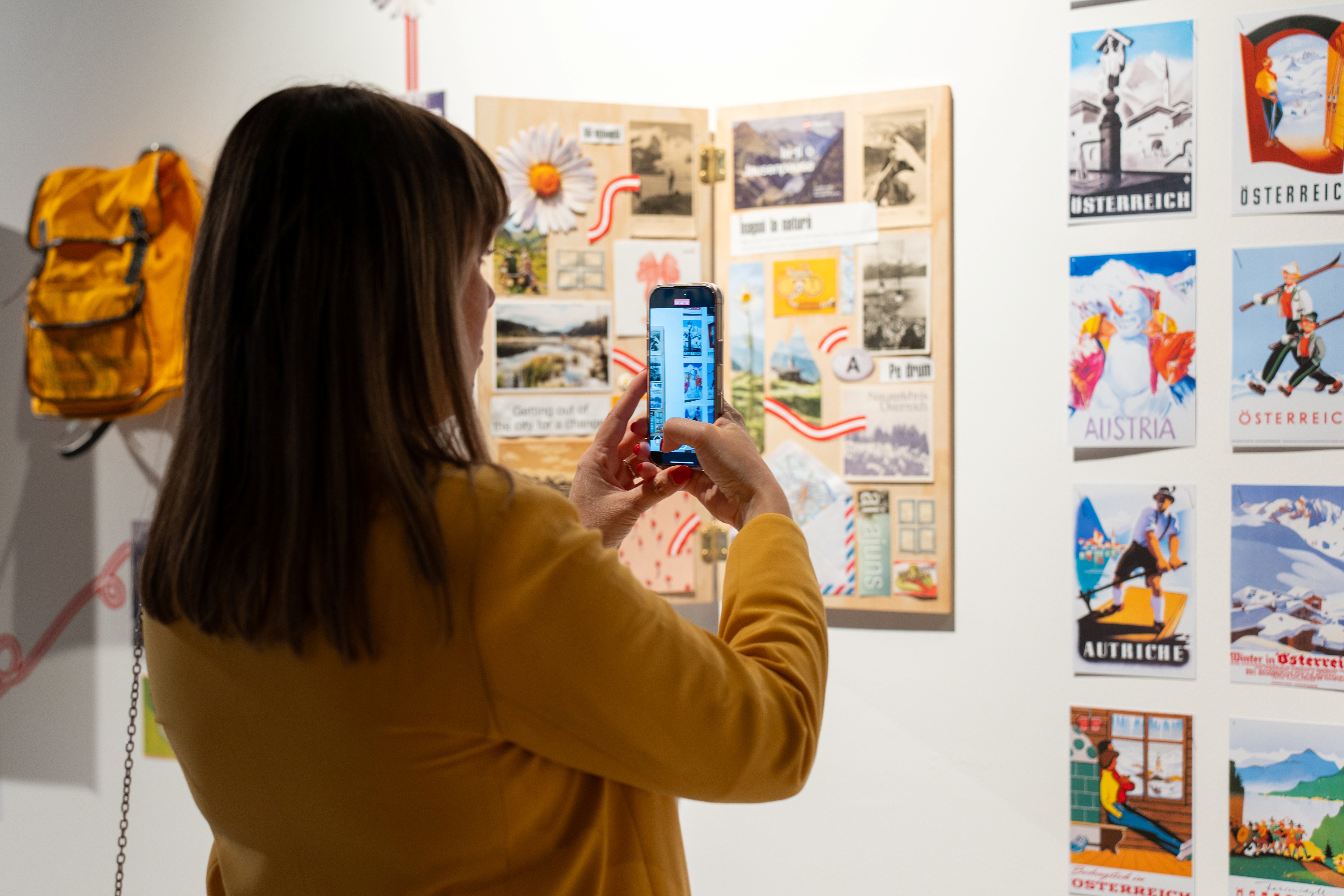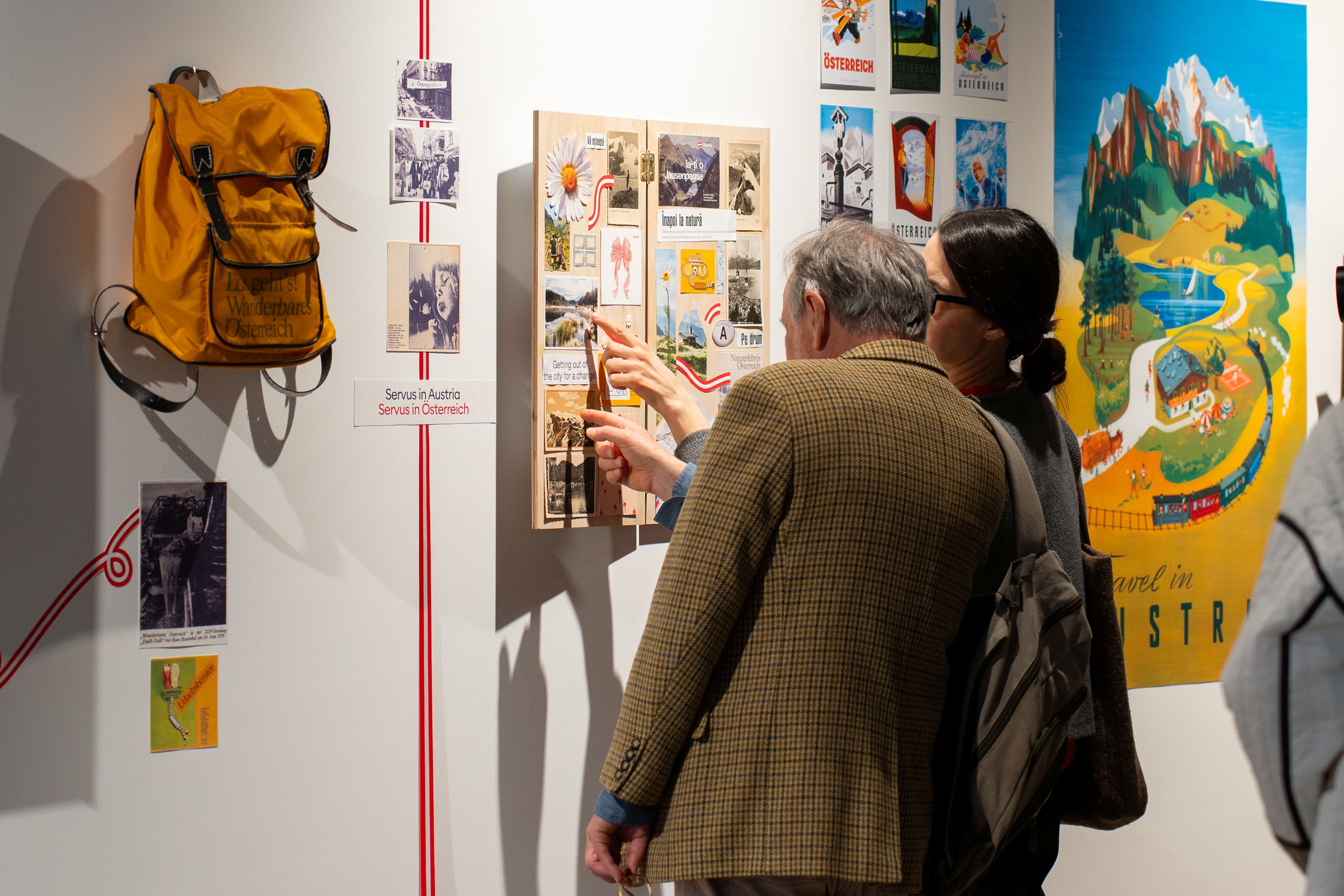1. Looking back at the process of building the Austriada exhibition, when was the first moment you realized this visual archive could tell a relevant story for today’s Romanian audience?
The moment I felt these images could tell a relevant story was when I discovered the Graphic Without Computer volumes curated by Ciprian Isac, co-founder of Atelierul de Grafică. These two volumes contain old posters from Central and Eastern Europe that are not only artistic but also almost documentary in nature. I was fascinated by how the graphics used in tourism and culture reflected the spirit of the times. That was the first step toward the idea that Austria had begun to build a visual tourism brand even back then. Later, I found the digital archive of the Austrian Tourism Office and realized that these symbols deserve to be recontextualized — because they say much more than they seem at first glance.

2. The exhibition marks 70 years of tourist imagery. What was the most unexpected detail or discovery that impressed you during this visual journey?
What surprised me most was how, over time, all these images began to shape a consciously developed national story — a sort of collective visual identity built piece by piece until it became reality. I was also fascinated by how major identity themes — tradition, nature, sport — were visually approached, even without a clear branding manual. Each era brought its own graphic style and reinterpreted symbols: in the ’50s, pop-art style skiers; in the ’70s, the Austrian daisy; in the ’80s, dramatic mountain photography. It’s like seeing the same story told in different visual languages.
3. Austriada offers a form of visual storytelling. What do you think is the role of design in shaping this story?
One visitor called it a “butterfly collection exhibition” — you have to get close, read, and discover. I liked that comparison. The exhibition’s design does exactly that: it invites you to pause, observe, and enter the story. We physically highlighted this visual storytelling through multiple textures, shapes, and dimensions with three “Proustian madeleines” that add depth to a space that might otherwise feel 2D — a suitcase from the 1940s, a promotional backpack from the 1970s, and our present-day tote bag. Three different moments jumping through time, visible not only in the graphics but also in the travel items.

4. The exhibition is a journey through Austria’s tourist imagination. How do you think such an approach could influence how we see our own visual identity as a tourist destination, in Romania?
At one point, we even considered including a few posters and brochures from the former Romanian ONT (National Tourism Office), to create a visual bridge between Romania and Austria. I think Austriada raises important questions for us, especially now: What is our image abroad? How do we want to be perceived? What truly remains memorable from everything we communicate? Just like personal branding, a country also needs to know who it is, what it wants to say, and how it wants to say it — in order to build something coherent and authentic.
5. In today’s context, dominated by digital imagery and video content, what lessons can we learn from posters and brochures of the past?
Old posters have a kind of discipline that feels almost radical in today’s era of endless scrolling. They force you to distill an idea into a single static frame. And they show how much visual language has evolved — from art deco symbols, to pop art, to documentary photography. They’re like visual time capsules. And I think we still have a lot to learn from their clarity and simplicity.

6. If you could leave visitors with just one takeaway after experiencing Austriada, what would it be?
That beyond clichés and politics, a country is also defined by the way it allows itself to be seen. Austriada shows how a country’s image can be built over time — through repetition, emotion, and continuous refinement. Visual identity is a form of long-term storytelling. And if you tell it well, it sticks with people.
About Oana Pop:
Oana Pop is a communications specialist and founder of the agency Introvert Media. For the exhibition Austriada. 70 Years of Illustrated Journeys, initiated by the Austrian National Tourist Office, she contributed to the narrative concept and material selection, bringing a contemporary perspective on national image-making.
